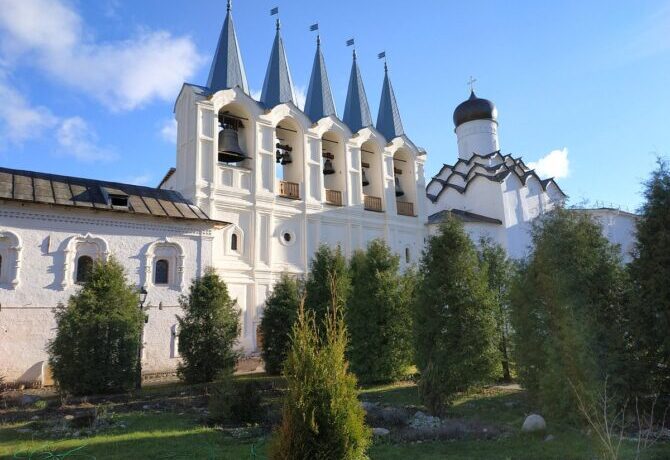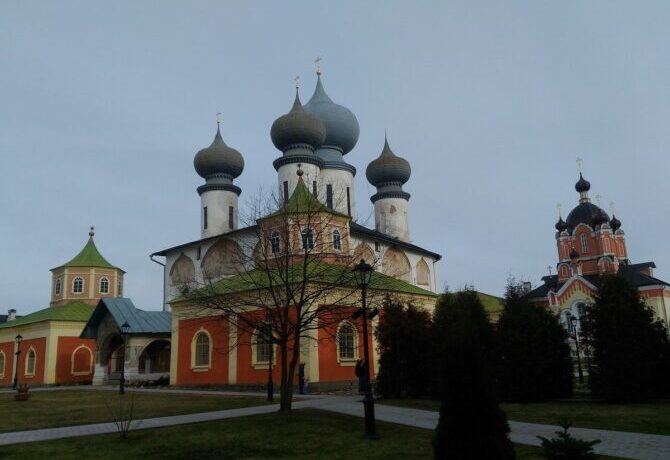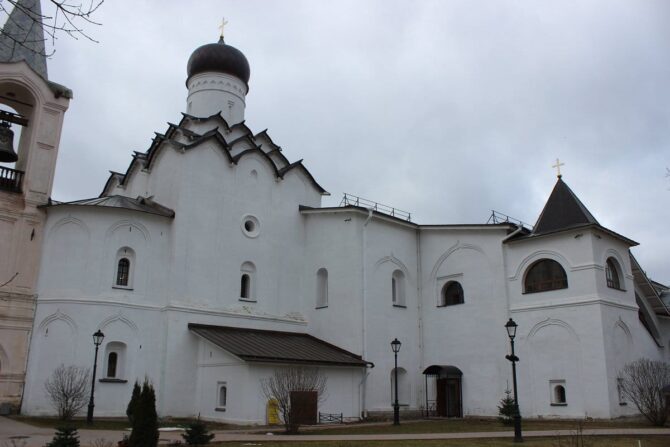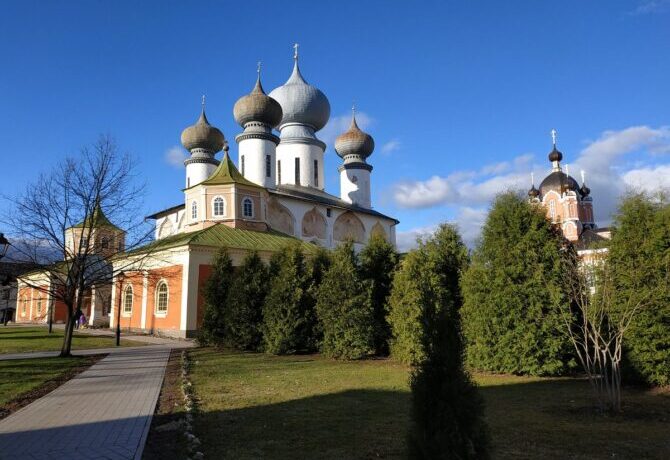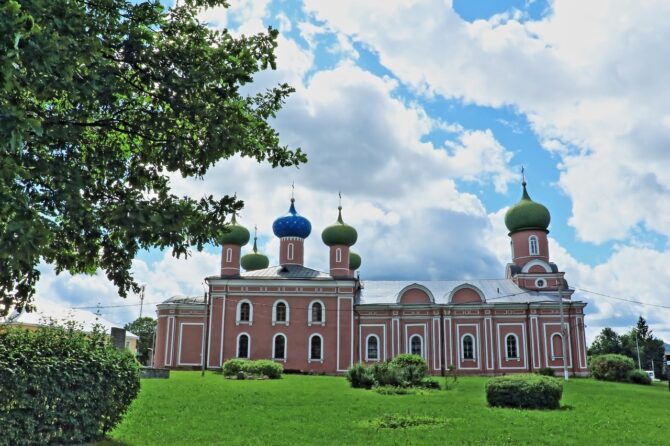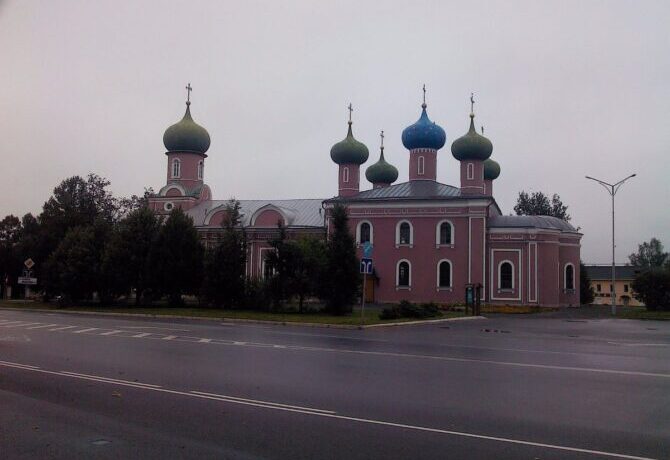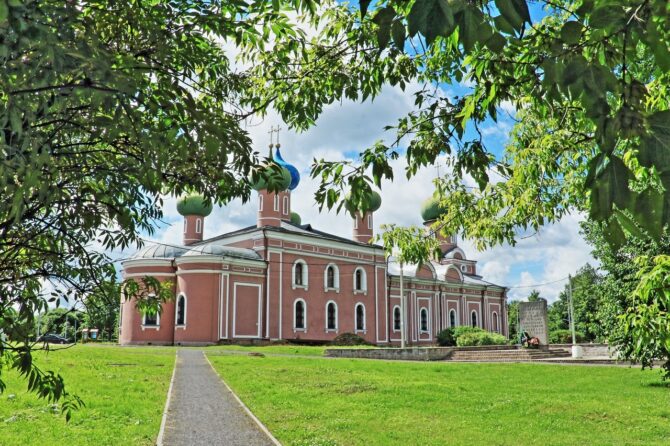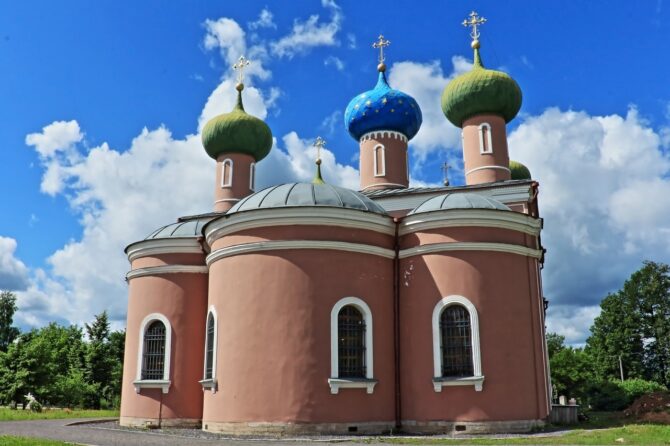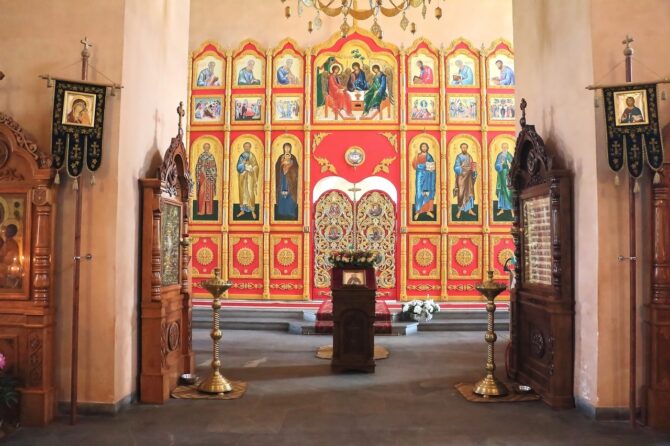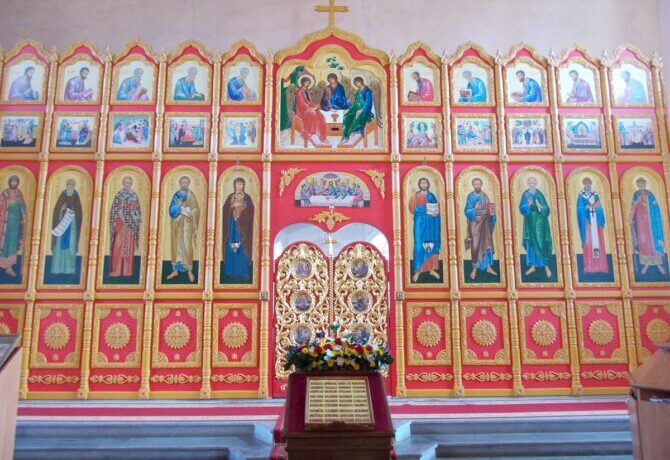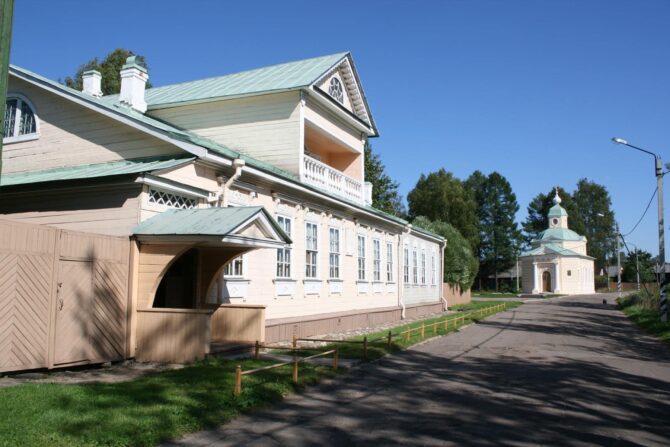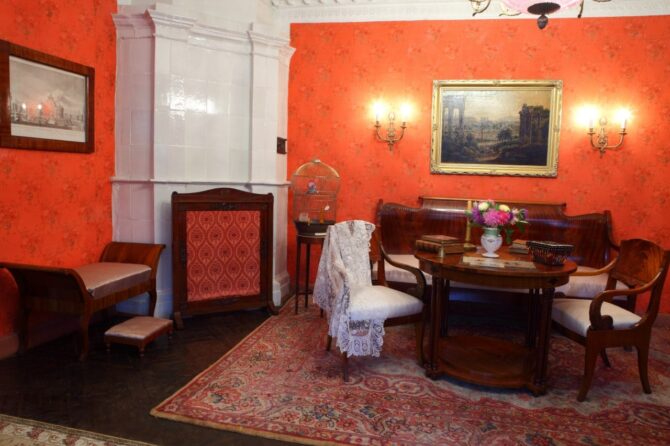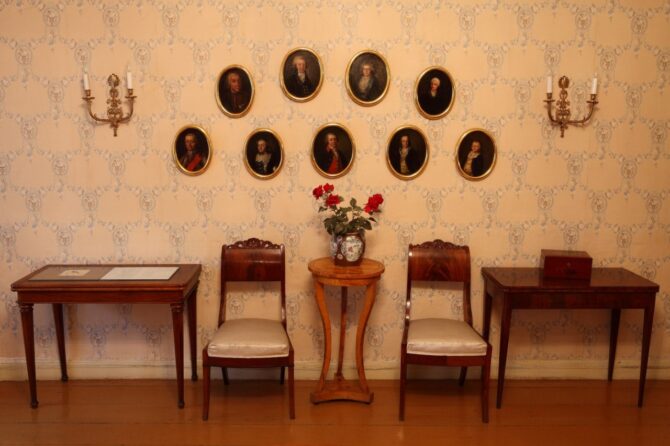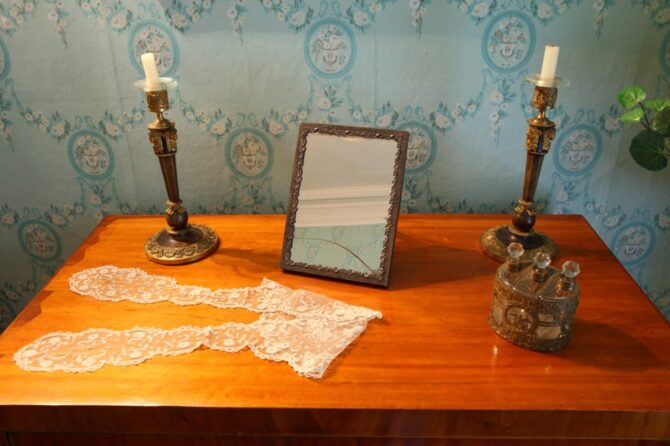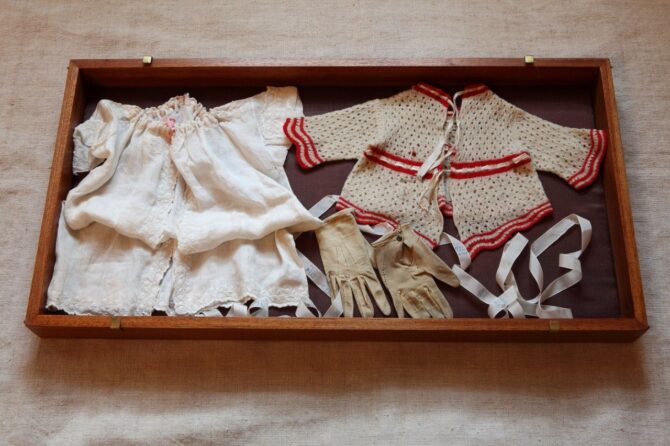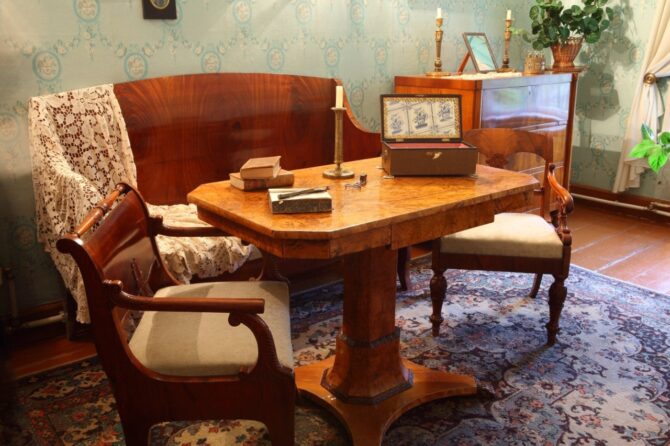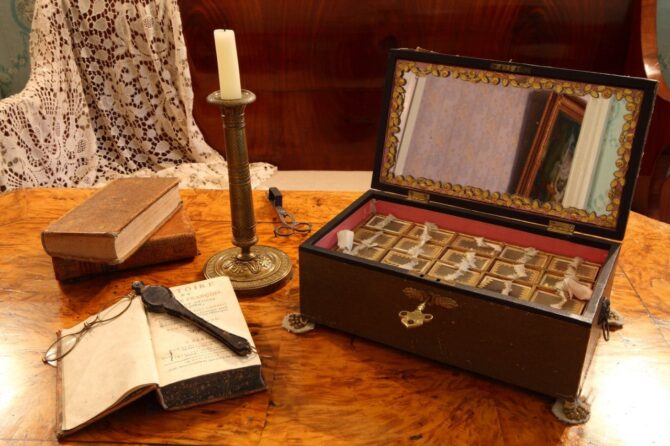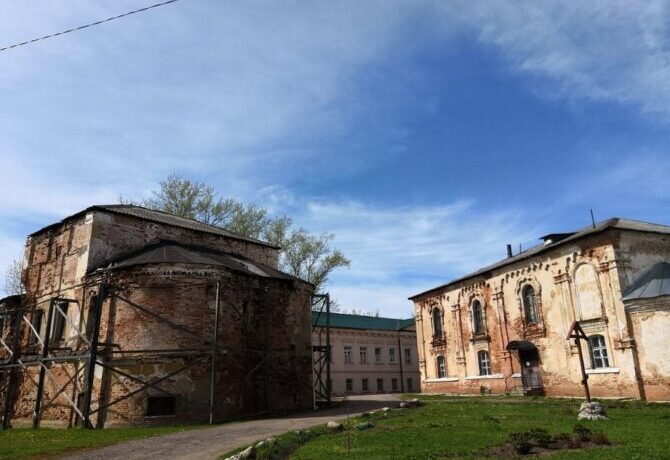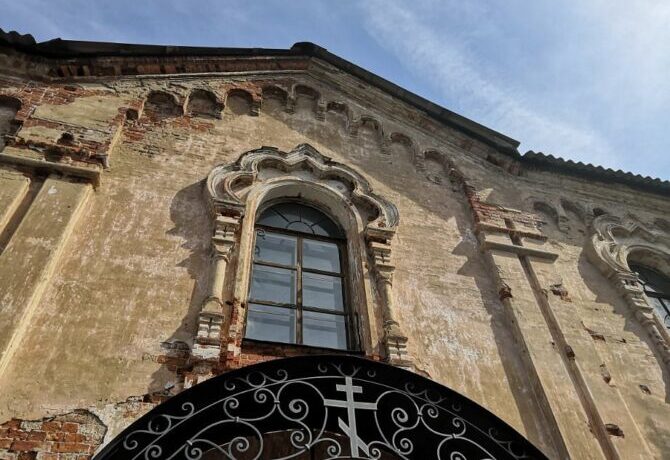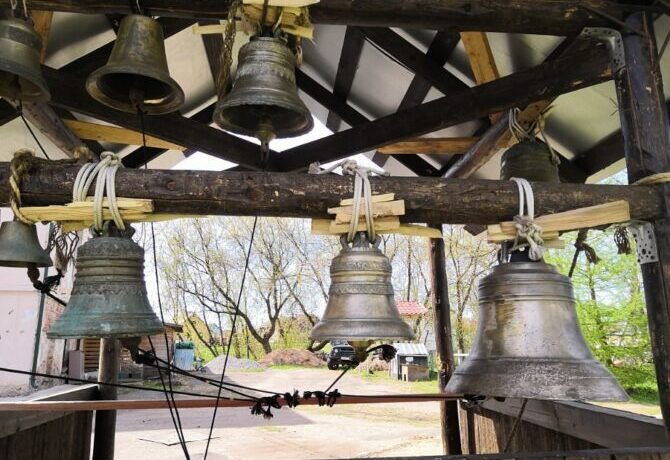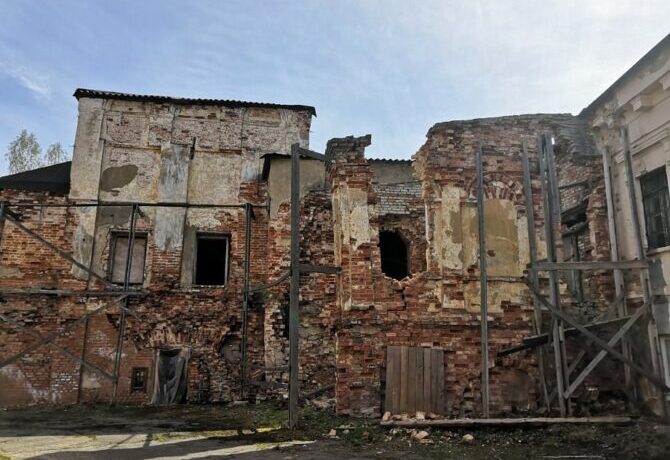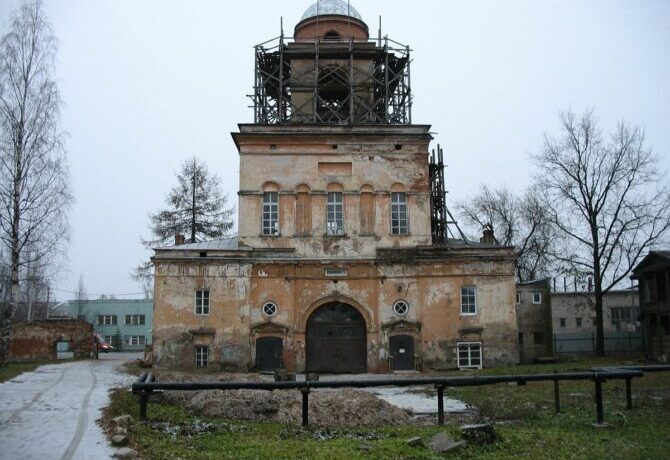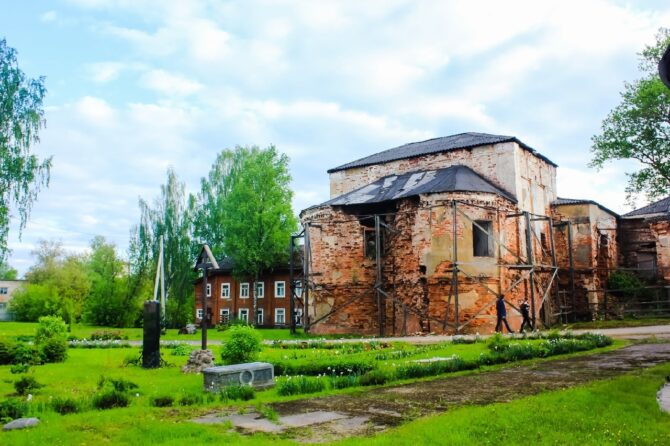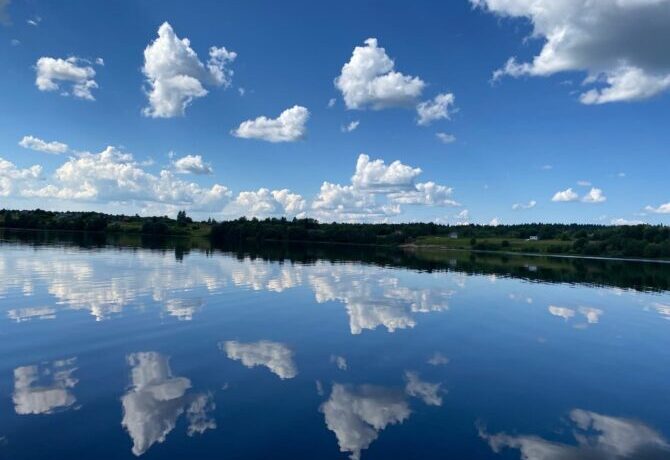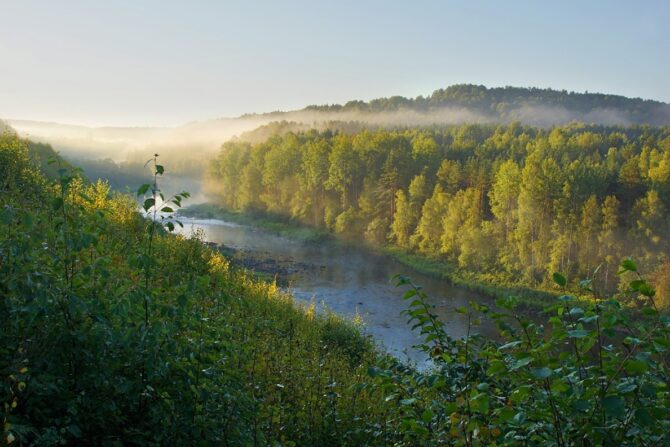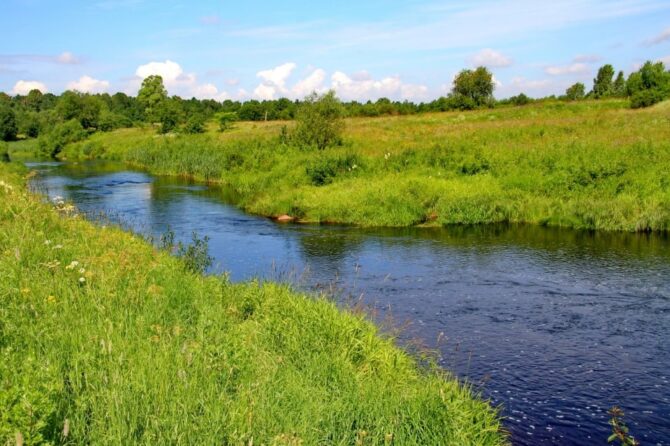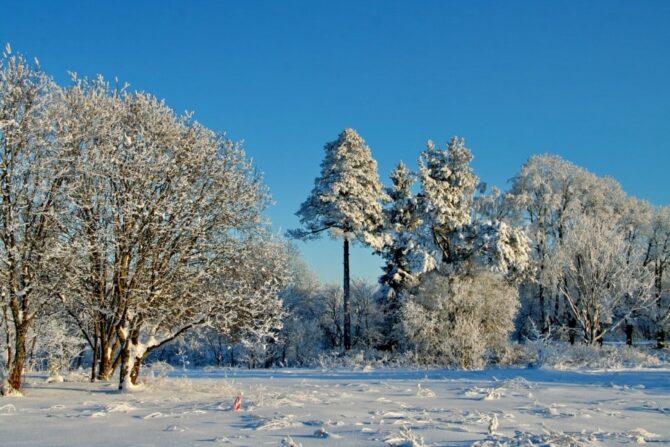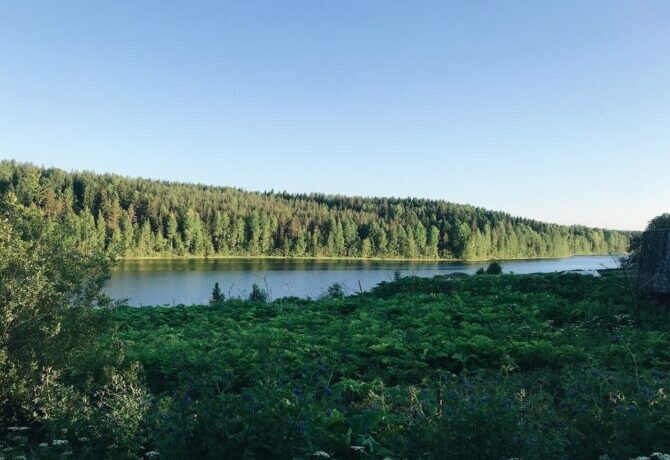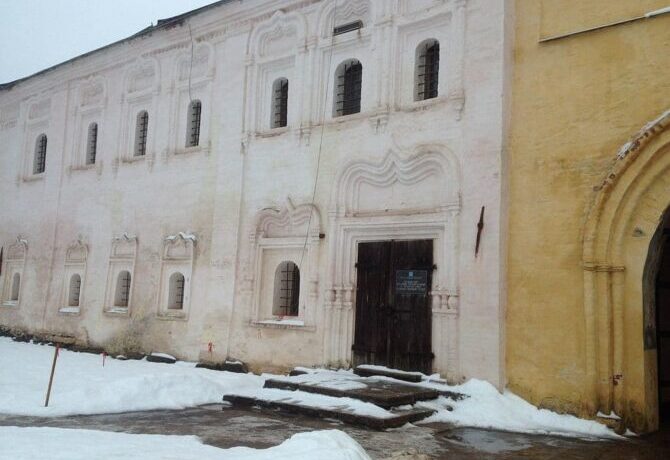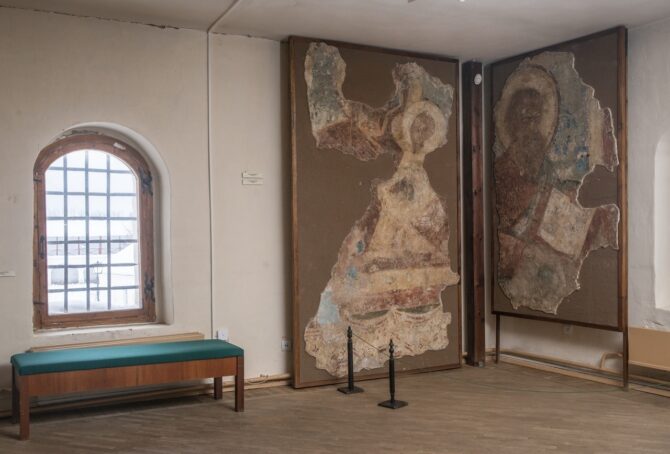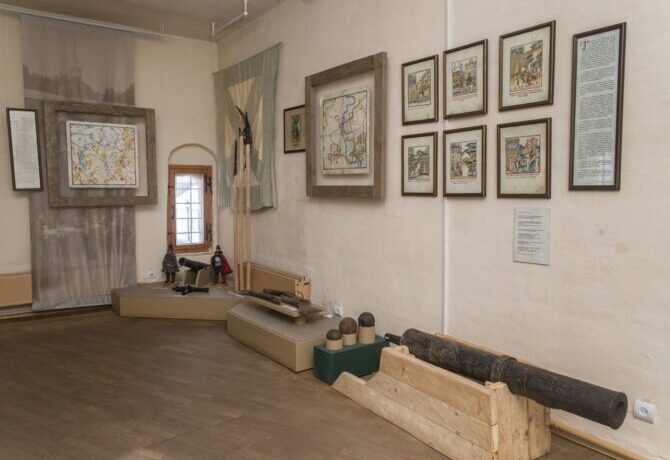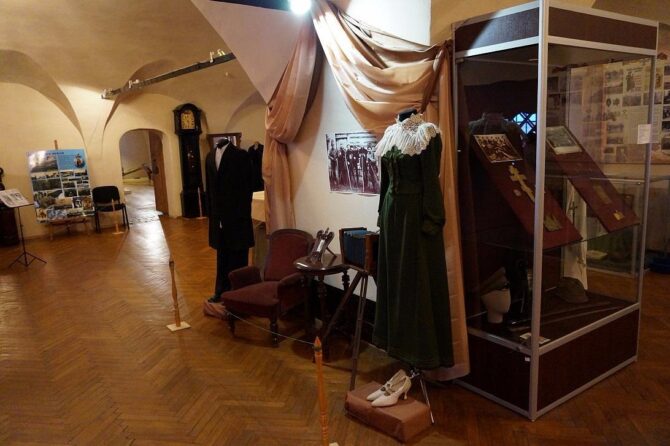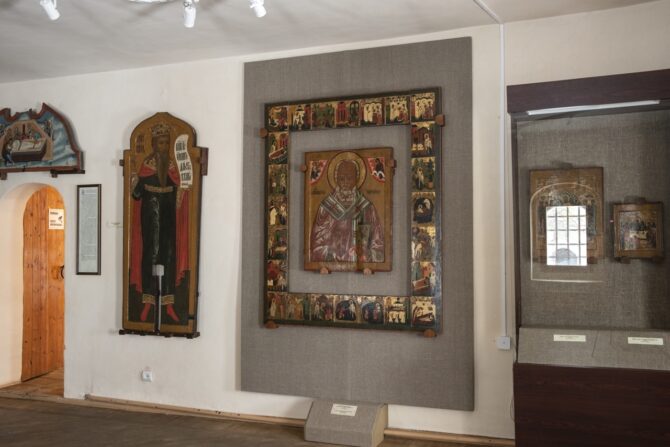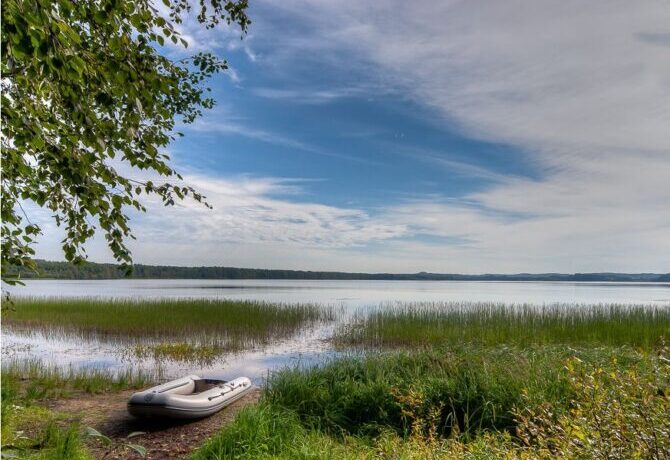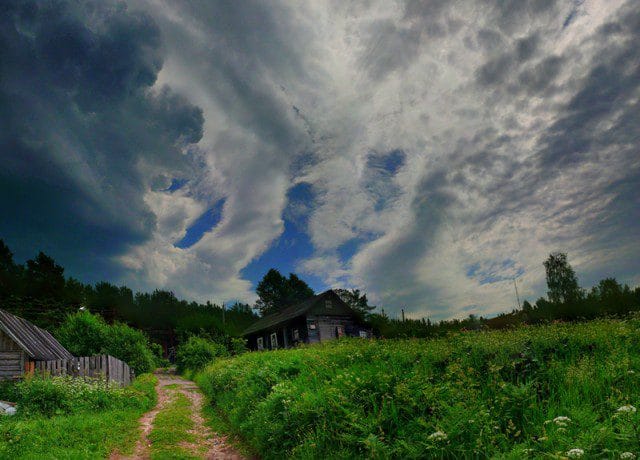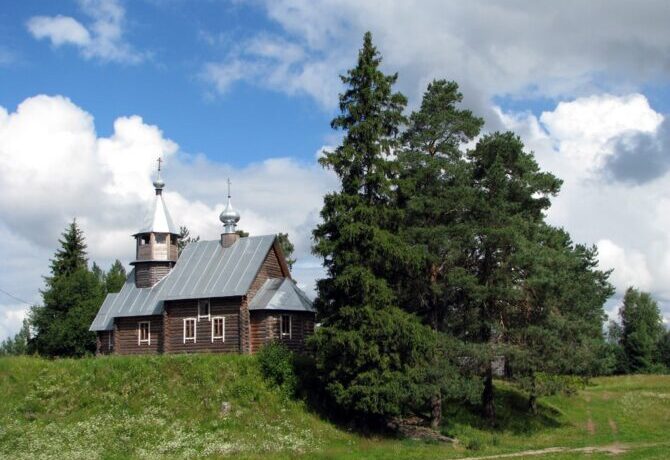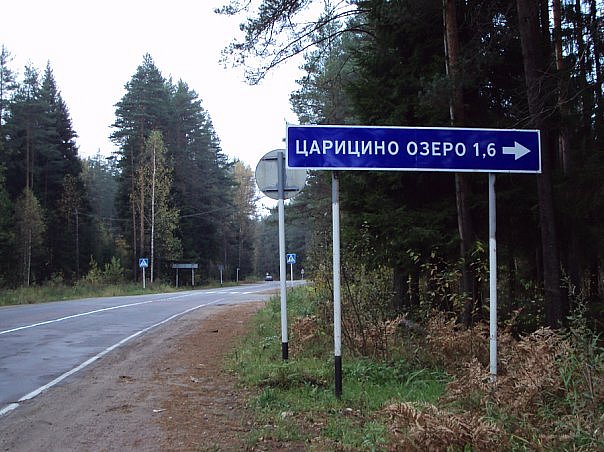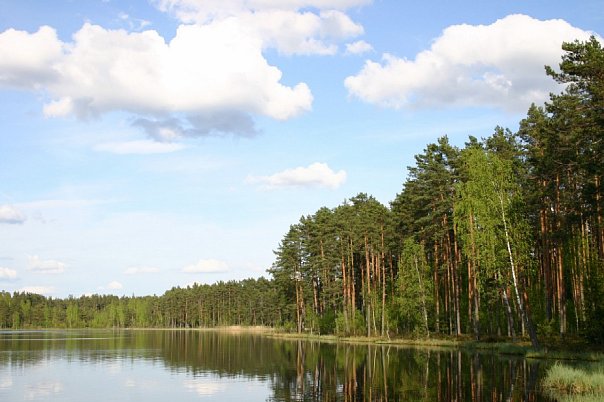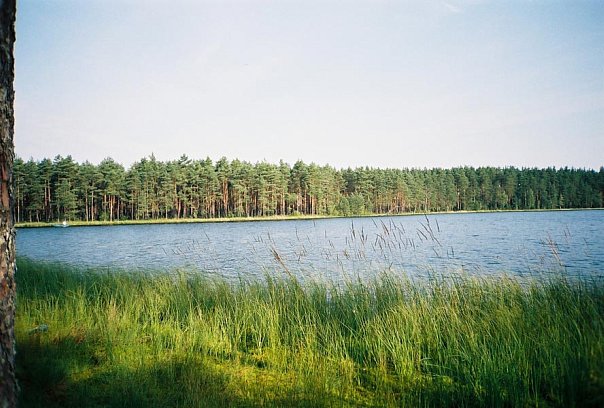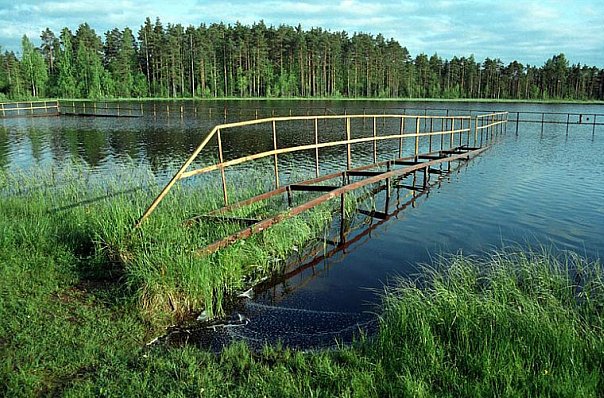A small town of the Leningrad region Tikhvin attracts tourists with its color and interesting sights. Here are concentrated majestic religious buildings with a long history. Driving a little away from the city, you can get to the edge of untouched nature, get acquainted with the culture of the original Veps people or just enjoy the incredibly beautiful landscapes.
Attractions Tikhvin on map
Theotoken assumption monastery
The Tikhvin Assumption Monastery was founded in 1560 by the Decree of Ivan the Terrible. Construction works were supervised by Fyodor Syrkov. The monastery is a real religious complex, which includes:
- The Assumption Cathedral – a temple consisting of five domes, was built in 1515, but over time certain changes were made in it. During the years of perestroika, the windows were enlarged, the floor was replaced with a bream coating, and instead of the old faded frescoes, new ones were applied. In front of the iconostasis installed a ramcen of granite.
- The Church of the Intercession is a small single-domed temple. It is adjacent to the bell gallery. The roof of the bell tower is pyramidal peaks, on the tops of which flags are installed. In 1623, gunpowder was stored in the building. After an accidental explosion, the bell tower was completely destroyed, it was restored only in the XIX century.
- Church “Krylechko” – a bright non-standard church from the side resembles a real tower from a fairy tale. The walls of the task are painted yellow, the dome is azure blue, the roof is green. The very first building of the church was erected in 1791, but as a result of fires it repeatedly burned down. In the XIX century, a stone building was built, but the church retained its old name in honor of the carved porch.
Also on the territory of the monastery there are cell buildings, which housed novices. The main shrine of the religious complex is the icon of the Mother of God. Many legends and stories are associated with it. One of these stories says that during the Second World War, the Germans completely burned the building of the temple. When the locals began to rake the rubble, they saw a completely undrehensed icon.
Address: Tikhvinskaya str., 1
Website: http://www.tihvinskii-monastyr.ru/
Transfiguration Cathedral
The real hallmark of the city is the Transfiguration Cathedral, which amazes with its grandeur and centuries-old history. In the XVI century, on the territory where the cathedral was later built, there was a small wooden church. It was in this church that parishioners went to pray and turn to God. About a century later, local merchants purchased a list from the miraculous icon of the Tikhvin Mother of God and returned it to their native lands. This important event prompted the villagers to demolish the old church building, and in its place to erect a new stone temple. The construction began in 1693, and the temple was fully completed in 1748. Then it was called Stockholm.
Over time, the temple began to upset, there were new extensions and a bell tower with a height of 41.4 meters. During the reign of the Bolsheviks, the church was closed, the domes were destroyed, and the icon was lost. The building was given to the city authorities, who located a cinema in it. After the collapse of the Soviet Union, the Orthodox Church was able to return the building to its possessions. For a long time, reconstruction work was carried out in it, and in 2004 the temple again received parishioners.
Nowadays, the building of the cathedral is painted in pink-brown color with white stripes. It is made in the style of Russian classicism. The complex includes the House of Mercy, outbuildings, a bell tower, a refectory, a parochial school.
Address: Freedom Square, 9
Site: http://www.tihvin.orthodox.ru/index.php
Rimsky-Korsakov House-Museum
The city of Tikhvin is the birthplace of the Russian composer N.A. Rimsky-Korsakov, who was not only born here, but also learned the first basics in music. The museum, dedicated to the composer, was opened in 1944 in honor of the 100th anniversary of his birth. It is located in the family estate of the Rimsky-Korsakovs, it was built in 1801. Since the construction of the house has not been practically modified, which made it possible to preserve the original elements of the decor – stucco, cornices, doors. In the 80s of the twentieth century, restoration work was carried out in the house. Their goal was to recreate the interior of the rooms.
In front of the museum there is a monument to Nikolai Andreevich. Konstantin Mitrofanov and Nikolai Dydykin worked on its creation. Now the museum has more than 10 thousand exhibits related to the composer’s family. Visitors can see real noble furniture, household items, personal belongings of Nikolai Rimsky-Korsakov. One of the main exhibits of the museum is the grand piano of the company “Becker”. At one time, he was played by Alexander Glazunov, Pyotr Tchaikovsky, Igor Stravinsky, Modest Mussorgsky, Alexander Skryabin. And Nikolai Andreevich himself played the instrument for about 30 years.
The museum is open from Tuesday to Sunday. Its doors are open from 10 a.m. to 6 p.m.
Address: Rimsky-Korsakov street, 12
Website: http://museum.ru/m244
Vvedensky Convent
The construction of the Vvedensky Convent was carried out in parallel with the Tikhvin Assumption Monastery by the Decree of Ivan the Terrible. It opened its doors in 1560. At that time, the complex was a real wooden fortress, around which a wall was built and a moat was dug. For a long time, no one heard about the monastery, until its nun was the fourth wife of Ivan the Terrible – the queen-nun Daria.
In 1613, the Vvedensky Monastery was almost completely burned by the Swedes. The only building that survived was a stone cathedral. The nuns, together with the nun Daria, had to hide for a long time in the forest on the shore of the lake. In the future, this lake was named Tsaritsyno. While the city was under Swedish occupation, Daria and several old women settled in Ustyuzhna-Zheleznopolskaya. The restoration of the Vvedensky Convent began only after Queen Daria returned to Tikhvin.
After the revolution, the monastery was officially closed. At one time, it housed a sports club, a music school, a fire station, garages, workshops and even living quarters.
The monastery resumed its activities only in 2009. Many buildings are still in poor condition. The facades, which at one time were decorated with stucco, are shabby walls from which paint slides. Local residents continue to fight for the restoration of buildings, but so far this issue has not been fully resolved. Despite this condition, the convent is in demand among tourists and pilgrims. It gained special popularity in 2017, when the icon of St. Panteleimon was frozen within its walls.
Address: 10 Zaitseva street
Website: http://www.tvzm.ru/index.php
Vepsian Forest Nature Park
The unique natural park “Vepsian Forest” is a real open-air museum created by Mother Nature herself. It is located in the edge of rivers, pines, numerous springs, beautiful forests and waterfalls. These places look as if they were not touched by the hand of a person. Although in ancient times on this territory lived an original people – the Veps, still carefully preserving their traditions and language.
During a visit to the park, guests can stay here for a few days, staying in a hotel, tent or guest house. Vacationers are given a unique opportunity to touch the Veps culture, become part of their traditions and customs, taste delicious dishes of national cuisine, become a real fisherman or hunter together with experienced guides or just go to the forest and return with full ears of mushrooms and berries. The park has all the conditions for sports and water tourism.
On the territory of the park there are ecological trails, there is a natural and ethnographic museum. Staff can help with individual, family, or group programs. There will be no time to be bored in the park. Rest in the fresh air surrounded by picturesque landscapes will appeal to both adults and children.
Address: Tikhvin district, 1st microdistrict, 42
Site: http://www.vepsles.spb.ru/
Historical-Memorial and Architectural-Art Museum
The museum is located on the territory of the Tikhvin Monastery. Its founder Isaakiy Petrovich Mordvinov is a teacher and researcher of the Tikhvin region. In 1913, he opened a small Museum of Local Antiquities. After 6 years, the collection of exhibits was nationalized and merged into the Tikhvin Interdistrict Museum of Local Lore. It is located in the building of the Great Assumption Monastery.
During the Great Patriotic War, when the city was under the occupation of the Germans, a significant part of the exhibits was lost. The fate of some of them is not known until now. During the armed clashes, a shell hit the storage building, which damaged the remaining exhibits.
The modern collection is based on the exhibits of the museum of the Tikhvin school. Beginning in 1959, teachers and students began to form a collection of items brought by local residents. By the mid-60s, 27 sections were collected, which no longer fit in the school classroom. In 1966, the collected collection was presented to the city in honor of the 25th anniversary of the liberation of the city.
Since 1968, the museum is located in the building of the Tikhvin Mother of God Monastery. Its modern collection has 40 thousand copies. Here you can see film materials, negatives, photographs, archaeological finds, books, weapons and this is not the whole list. The museum receives visitors from Tuesday to Sunday, from 10:00 to 18:00.
Address: Tikhvinskaya street, 1
Site: http://lenoblmus.ru/museum/tikhvinskiy_muzey
Shugozero
Shugozero is a natural attraction that will not be able to leave indifferent any connoisseur of outdoor activities and beautiful nature. The reservoir has a rounded shape, stretched from west to east. Its length is about 4 kilometers, the average width is 1.7 km. Shugozero is located in a deep basin, surrounded by steep cliffs. Steeper banks are on the north and south sides. But the western and eastern part is famous for more gentle coastal zones. The maximum depth in the lake reaches 25 meters.
From the lake flows the only river that connects it with the Pasha. Shugozero is great for fishing. There are gustera, spruce, asp, redfish, roach, bream, som, pike, yaz. On all sides, the reservoir is surrounded by beautiful landscapes, you can safely come here to camping.
Address: Leningrad region, Tikhvin district, Shugozero settlement, Sovetskaya str., 11.
Tsaritsyno Lake
One of the most famous reservoirs in the Tikhvin district is Tsaritsyno Lake. It is located 8 kilometers north of Tikhvin. And its name was in honor of Queen Daria – the fourth wife of Ivan the Terrible. The real name of the wife is Anna Alekseevna Koltovskaya. After a short marriage with Ivan the Terrible, she was tonsured in the Goritsky Monastery. During the Swedish occupation, the girl, along with the old women, hid on the shore of this reservoir.
Now Tsaritsyno Lake is a resort area. Connoisseurs of active recreation come here. On the lake you can not only admire the beautiful scenery and breathe fresh air, but also enjoy fishing. In summer, the lake is suitable for water treatments.
Not far from the reservoir there is a monument-stele to the wons from the 272nd Infantry Division. In 1941, they took part in the battles for the liberation of Tikhvin from the nazi invaders.
Walking through the streets of old Tikhvin, guests will receive moral and aesthetic pleasure from its many historical and architectural buildings. It is here that you can touch the religious past of our state for a moment. Having walked from the heart, go to get acquainted with the natural sights of the region. Local places are famous for picturesque landscapes, protected areas, clean air.

